As a livestock farmer or animal feed producer, understanding the various feed ingredients available is crucial for creating nutritious and cost-effective diets. In this comprehensive guide, we'll explore 40 common feed ingredients, their nutritional value, and best practices for incorporating them into your animal feed formulations. From energy-rich grains to protein-packed supplements, discover how these ingredients can help you optimize animal health and productivity.
Corn is the undisputed king of energy feeds, dominating the market with its unparalleled nutritional value. Its key features include:
Corn's amino acid profile is lacking in lysine (0.24%) and tryptophan (0.07%), but it's an excellent source of linoleic acid, an essential fatty acid for poultry. When corn makes up more than 50% of a chicken's diet, it can fulfill their linoleic acid requirements.
Rice bran meal, a byproduct of rice processing, is a nutritional powerhouse packed with protein, vitamins, and minerals. It contains:
Also known as "Rice Meal Treasure" or "Rice Soup Essence," rice meal is the essence of rice nutrition. It's a natural, nutrient-dense food for humans, produced during the milling process of brown rice into white rice. Rice meal contains:
Incorporate rice meal into your animal feed formulations for a boost in essential nutrients.
Soybean meal, a byproduct of soybean oil extraction, is a protein champion in the world of animal feed. It comes in two varieties: dehulled soybean meal and non-dehulled soybean meal.
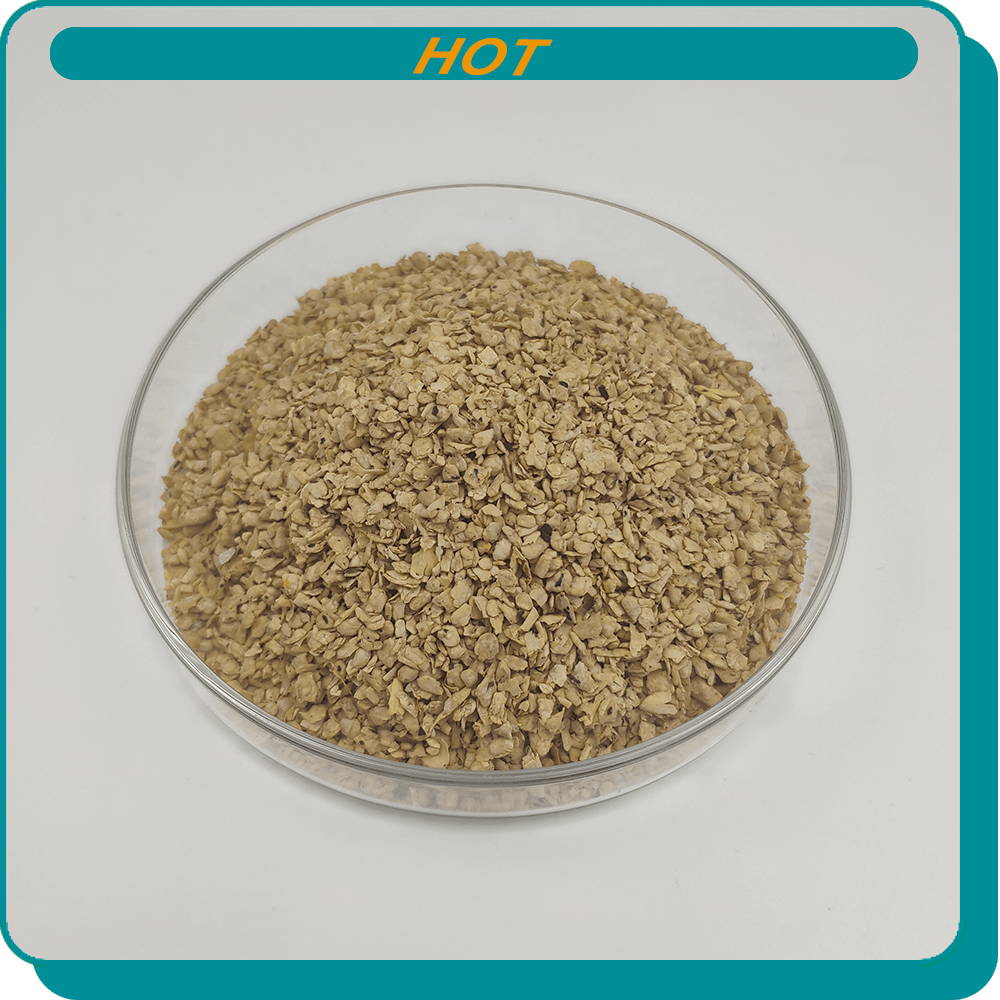
Soybean meal is classified into three grades according to national standards:
| Grade | Crude Protein | Appearance |
|---|---|---|
| Grade 1 | 43-50% | Light yellow to light brown, irregular pieces |
| Grade 2 | 43-50% | Light yellow to light brown, irregular pieces |
| Grade 3 | 43-50% | Light yellow to light brown, irregular pieces |
Soybean meal boasts a high crude protein content and an excellent amino acid profile, with lysine levels ranging from 2.4-2.8%, the highest among oilseed meals. Its lysine-to-arginine ratio of 1:1.3 is well-suited for poultry nutrition when combined with corn and small amounts of fishmeal.
Rapeseed meal, a byproduct of rapeseed oil extraction, is a light grayish-brown feed ingredient with a crude protein content of 34-38%. Its amino acid profile is characterized by:
Rapeseed meal has a relatively low metabolizable energy value due to its low starch content and the presence of difficult-to-digest rapeseed hulls. However, it boasts high levels of calcium, phosphorus, selenium, and manganese, with selenium content being the highest among commonly used plant-based feed ingredients.
Despite its nutritional benefits, rapeseed meal contains antinutritional factors such as glucosinolates, erucic acid, tannins, and phytic acid, with glucosinolates being the primary concern.
Distillers Dried Grains with Solubles (DDGS) is a co-product of the ethanol production process using corn as a raw material. During fermentation, starch is converted into ethanol and carbon dioxide, while other nutrients like protein, fat, and fiber remain in the distillers grains. The fermentation process also increases the content of protein, B vitamins, and amino acids compared to the original corn, and generates unknown growth-promoting factors.
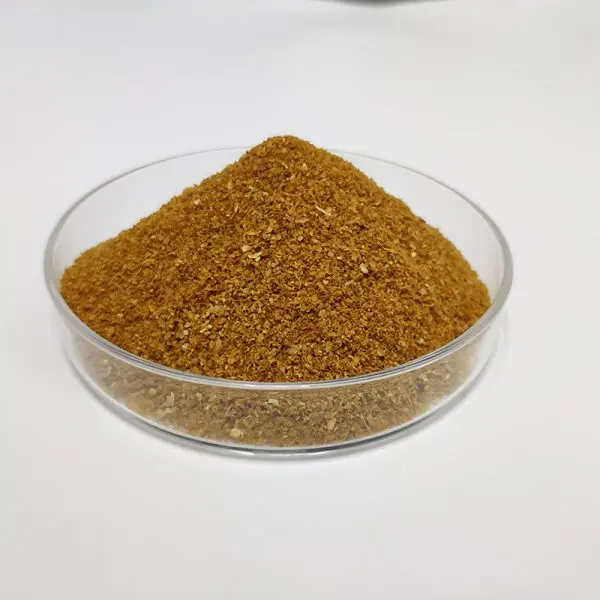
Two types of corn DDGS products are available in the market:
With a crude protein content exceeding 26%, DDGS has become a widely used new type of protein feed ingredient in domestic and international feed production. It's commonly used to replace soybean meal and fishmeal in compound feeds, with a maximum inclusion rate of 30%. DDGS can also be directly fed to ruminants.
For more information on protein feed ingredients, visit Pangoo's Feed Protein collection.
Wheat bran and middlings are common wheat processing byproducts used as animal feed ingredients. Their nutritional value varies depending on the wheat flour processing requirements. Wheat bran generally consists of the seed coat, aleurone layer, part of the germ, and a small amount of endosperm, while middlings are composed of the aleurone layer, endosperm, and a small amount of fine bran.
Wheat bran and middlings offer several nutritional benefits:
Wheat bran has a loose texture and contains appropriate amounts of sulfates, making it mildly laxative and helpful in preventing constipation.
Wheat is a staple energy source in animal feed, with a nutritional profile similar to corn. It contains:
When fed to chickens, wheat's performance is about 90% that of corn. It may cause issues similar to barley, such as decreased feed conversion in laying hens and wet litter, ammonia odor, growth suppression, hock damage, and breast blisters in broilers, leading to lower post-slaughter grades.
Rice bran, derived from the seed coat and germ of rice, is a primary byproduct of rice processing. It's a light yellow, fine-grained material with a pleasant aroma. Rice bran is rich in various nutrients and physiologically active substances, with an average composition of:
The fat in rice bran primarily consists of unsaturated fatty acids like oleic and linoleic acid, along with high levels of vitamins, phytosterols, dietary fiber, amino acids, and minerals. Rice bran can be further processed to extract specific nutritional components, such as riboflavin, phytic acid calcium, rice bran oil, phytic acid, inositol, and calcium hydrogen phosphate. The rice wax and oryzanol in rice bran have cholesterol-lowering effects.
Soybean oil meal, also known as soybean meal, is a byproduct of soybean oil extraction. It comes in two varieties: dehulled and non-dehulled. Soybean meal is an excellent source of high-quality protein, with a crude protein content ranging from 40-50% depending on the processing method.
Key features of soybean meal include:
Soybean meal is a crucial ingredient in balancing protein and amino acids in animal feed formulations.
For more information on plant-based feed ingredients, visit Pangoo's Natural Feed Additives collection.
Soybean protein lysine more, methionine is less. In rural areas where plant food is the mainstay, attention should be paid to the use of soybean products with methionine-rich foods, such as rice, noodles and other grains and cereals and chickens, ducks, pigeons, quail and other egg foods, which can improve the utilization rate of soybean protein. Eggs, beans with food, its nutritional value and meat protein is not comparable.
Soybeans contain a fat substance called linoleic acid, which can promote children's neurodevelopment. Linoleic acid also lowers blood cholesterol, making it a good food for preventing high blood pressure, coronary heart disease and arteriosclerosis. In addition, soybeans are rich in B vitamins and inorganic salts such as calcium, phosphorus and iron. Although dry soybeans do not contain vitamin C, but after germination can produce vitamin C, in the vegetable off-season, can be supplemented to eat. Raw soybeans contain antitrypsin factors, which affect the body's absorption of the nutrients in soybeans. Therefore, when consuming soybeans and soy foods, the cooking time should be longer than that of ordinary foods, so that high temperatures can destroy these factors and increase the nutritional value of soy protein.
Soy protein content of up to 40% or so, the best quality up to 50% or so, equivalent to more than 2 times the lean pork, eggs 3 times. The amino acid composition of soy protein is close to the amino acids needed by the human body, belongs to the complete protein, which is more dependent on the amino acid content, every hundred grams of soybeans contain about 35.8 mg of iron, containing 418 mg of phosphorus, and vitamin A B1 B2 D E and so on.
For more information on plant-based protein sources, visit Pangoo's Feed Protein collection.
Bentonite, primarily composed of montmorillonite clay, is a versatile feed additive with unique physicochemical properties, including swelling, adhesion, adsorption, catalysis, thixotropy, suspension, and cation exchange capacity. These properties make bentonite a valuable ingredient in various applications, such as agriculture, light industry, cosmetics, and pharmaceuticals.
When used in animal feed, bentonite can improve pellet quality, reduce feed dust, and adsorb mycotoxins. It also has a positive impact on animal health by promoting better digestion and nutrient absorption.
Soybean lecithin, extracted from soybean oil by-products, is an essential lipid source in animal nutrition. It consists of glycerin, fatty acids, and choline or choline esters, which are soluble in oils and non-polar solvents. Soybean lecithin plays a crucial role in fat metabolism, muscle growth, nervous system development, and antioxidant protection in animals.
Soybean lecithin is classified into two main categories: standard and deoiled. Standard soybean lecithin is more commonly used in animal feed due to its lower price. The main components of soybean lecithin include:
Incorporating soybean lecithin into animal feed can improve fat utilization, support healthy growth and development, and enhance the overall nutritional value of the diet.
L-Lysine HCl 98.5% is a highly pure form of lysine, an essential amino acid crucial for animal growth and development. As the only amino acid with a side chain primary amine group, lysine plays a vital role in protein synthesis and can be modified into various derivatives within the body.
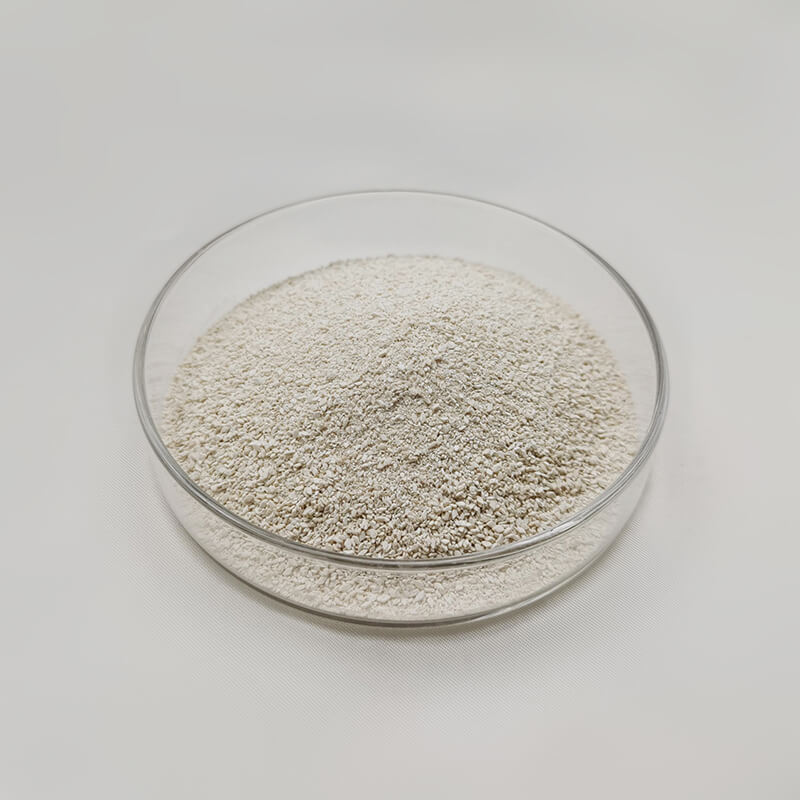
Key benefits of L-Lysine HCl 98.5% include:
L-Lysine HCl 98.5% is a highly effective and bioavailable source of lysine, making it an ideal supplement for optimizing animal nutrition and performance.
For more information on amino acids in animal nutrition, visit Pangoo's Amino Acids collection.
DL-Methionine is a sulfur-containing, non-polar amino acid essential for animal growth and development. As a precursor to other amino acids such as cysteine and taurine, methionine plays a crucial role in protein synthesis and various metabolic processes.
Pangoo offers two forms of DL-Methionine:
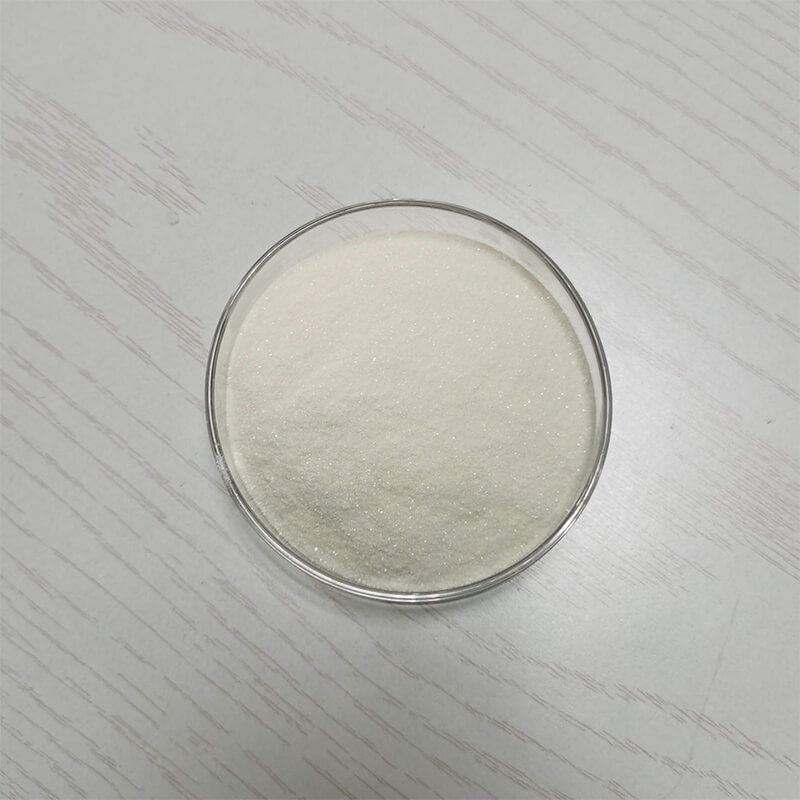
DL-Methionine supplementation in animal feed provides numerous benefits:
By incorporating DL-Methionine into animal feed formulations, producers can optimize animal performance, health, and overall productivity.
Brewer's yeast, also known as saccharomyces cerevisiae, is a functional feed ingredient with numerous benefits for animal nutrition. It's produced through the fermentation of industrial wastewater, residues, or other raw materials inoculated with yeast.
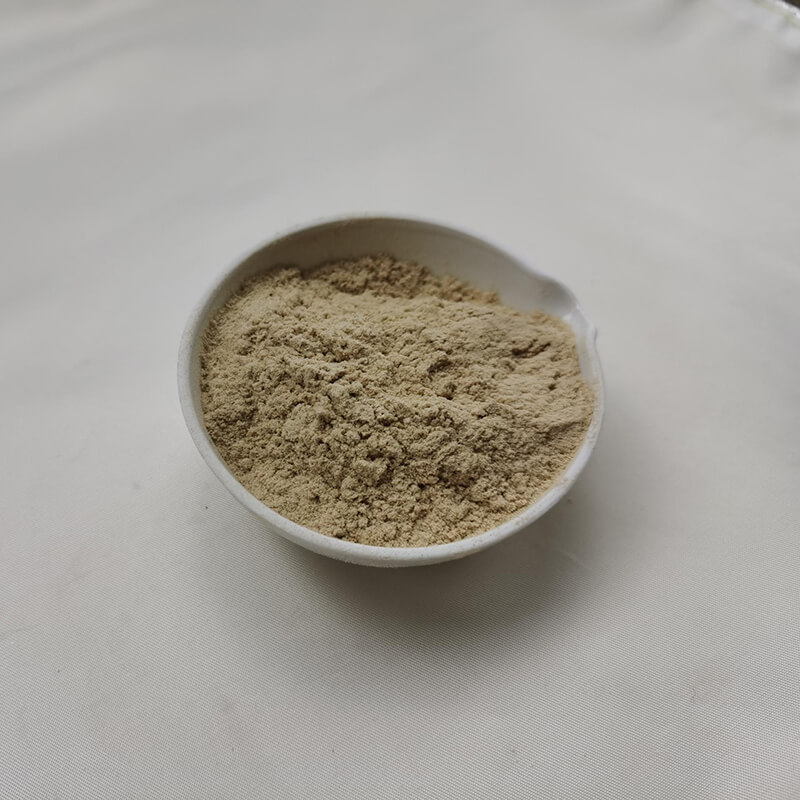
Brewer's yeast offers several advantages:
The effectiveness of brewer's yeast in animal feed depends on factors such as the animal species, diet composition, and yeast strain. It's important to use brewer's yeast in moderation to avoid negatively impacting diet palatability, amino acid balance, and production costs.
Pangoo offers a range of high-quality brewer's yeast products, including feed yeast, soluble feed yeast, and saccharomyces cerevisiae.
Feather meal is a protein-rich feed ingredient produced from poultry feathers collected from large-scale slaughterhouses, meat processing plants, and markets. The feathers undergo separation, high-temperature and high-pressure treatment (0.7 MPa for 30-40 minutes), sterilization, drying, and other processes to create a fine, protein-rich meal.
The nutritional value of feather meal varies depending on the source material, with lighter-colored feathers resulting in a light golden meal and darker feathers yielding a dark brown-black meal. Feather meal can contain up to 80% protein and a complete amino acid profile, making it a valuable protein feed resource.
Feather meal is particularly rich in sulfur-containing amino acids, making it beneficial for fur and feather growth in animals. It can help reduce feather pecking, feather eating, and self-biting behaviors in poultry and fur animals.
destroy antinutritional factors such as trypsin inhibitors, which can interfere with protein digestion and absorption.
Corn gluten meal is a byproduct of the corn wet-milling process used in the production of starch and ethanol. It's a concentrated source of protein, typically containing 60-70% crude protein.

The protein in corn gluten meal consists mainly of zein (60%), glutelin (22%), globulin, and albumin. It's a valuable feed ingredient due to its high protein content and absence of antinutritional factors, making it safe for direct use in animal feed without further processing.
To explore more plant-based protein sources for animal feed, visit Pangoo's Feed Protein collection.
Palm kernel meal, a byproduct of palm kernel oil extraction, is a high-fiber protein source for animal feed. Despite its relatively low crude protein content (14-19%), palm kernel meal is classified as a roughage due to its fiber content. It has an unbalanced amino acid profile, lacking in lysine, methionine, and tryptophan, and its fatty acids are primarily saturated.
While palm kernel meal is not recommended for poultry and piglets, it can be used at inclusion rates below 15% for growing and finishing pigs. In dairy cattle, palm kernel meal can improve cheese quality, but high inclusion rates may negatively impact feed palatability.
Choline chloride is an essential organic compound that plays a vital role in maintaining animal health and physiological functions. As a salt of choline, it is widely used as a feed additive in the form of choline chloride.
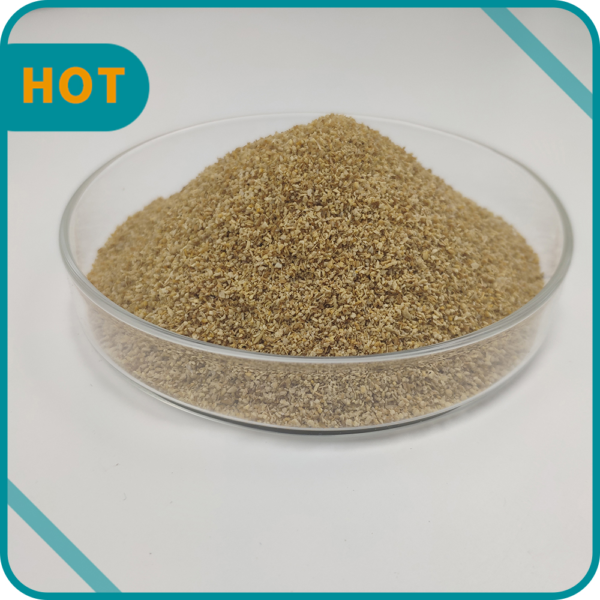
Choline has three main functions in animal metabolism and growth:
Choline chloride supplementation in animal feed has been shown to promote growth and development, improve meat and egg quality, reduce feed consumption, and enhance overall animal performance.
Pangoo offers high-quality choline chloride in various concentrations (50%, 60%, and 70%) to meet the diverse needs of animal feed producers.
ions, providing a wide range of nutrients to support animal health and growth.
Lipid Energy is a new type of high-efficiency energy feed ingredient designed for poultry and swine. Its key features include:
Incorporate Lipid Energy into your feed formulations for a balanced and efficient energy source that promotes animal health and performance.
L-Threonine is an essential amino acid that plays a crucial role in animal nutrition. As one of the 20 amino acids that make up proteins, L-Threonine is a building block for tissue growth and repair.
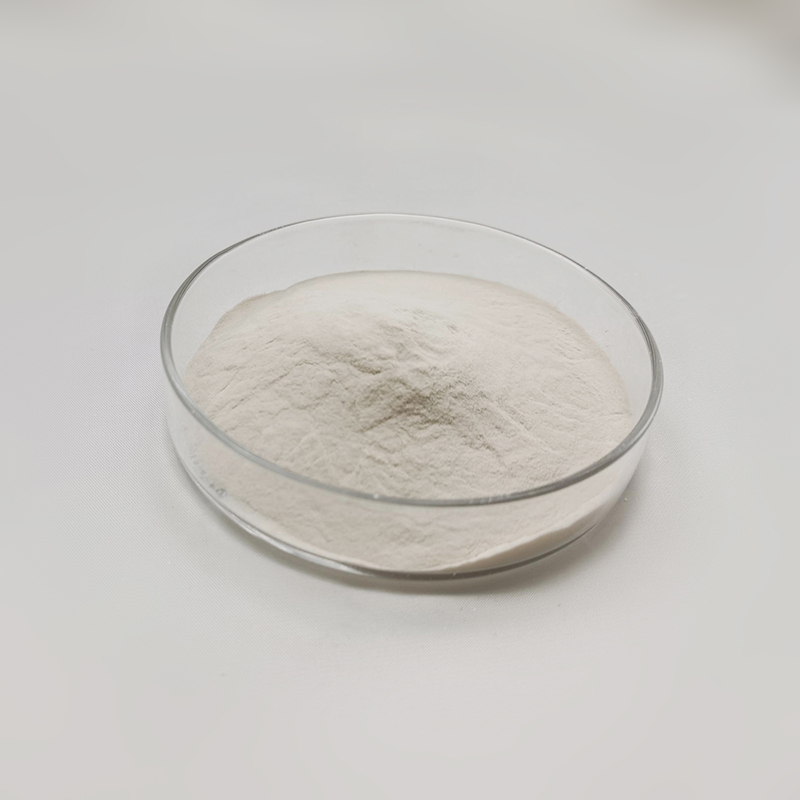
Key features of L-Threonine include:
L-Threonine is widely used in pharmaceuticals, chemical reagents, food fortification, and feed additives. In animal nutrition, it is particularly important for young pigs and poultry, serving as the second limiting amino acid in swine diets and the third limiting amino acid in poultry diets.
Adding L-Threonine to your feed formulations can:
Explore Pangoo's range of amino acid feed additives to optimize your animal nutrition programs.
L-Lysine Sulfate is a high-density, dust-free, and free-flowing granular feed ingredient with excellent processing properties. It contains:
In addition to providing 51% lysine (equivalent to 65% feed-grade L-Lysine Sulfate), L-Lysine Sulfate also contains at least 15% other amino acids, offering a more comprehensive and balanced nutrition for animals.
L-Lysine Sulfate is one of the three main forms of lysine products available in the market, alongside L-Lysine HCl and liquid lysine. Compared to traditional L-Lysine HCl, the production process of L-Lysine Sulfate has been improved to:
By overcoming environmental challenges and streamlining production processes, L-Lysine Sulfate offers both social and economic benefits.
Dicalcium Phosphate, also known as calcium hydrogen phosphate or precipitated calcium phosphate, is a neutral calcium phosphate salt used in animal feed. It comes in two forms:

Dicalcium Phosphate is slightly soluble in water and soluble in ammonium citrate solution, making it a citrate-soluble phosphate fertilizer. It appears as a dry, loose, and non-hygroscopic white crystalline powder.
The dihydrate form contains 42.26% P2O5 (pure) and 38-40% P2O5 (commercial), while the anhydrous form contains 52.20% P2O5 (pure) and 46-48% P2O5 (commercial). Low levels of impurities such as fluorine, arsenic, and heavy metals make Dicalcium Phosphate suitable for use as a calcium and phosphorus feed additive, as well as in food additives, pharmaceuticals, and plastic additives when high purity is required.
Dicalcium Phosphate is a component of nitrophosphates, ammoniated calcium phosphate, and compound fertilizers containing ammoniated calcium phosphate. Although dedicated Dicalcium Phosphate production plants for fertilizers are rare, it can be produced as a feed additive by:
Pangoo offers high-quality Dicalcium Phosphate feed grade to meet your animal nutrition needs.
Stone powder, or limestone powder, is a natural calcium source used in animal feed. It contains 32% calcium and is typically light gray or grayish-white in color. Some regions may refer to it as heavy calcium or heavy calcium carbonate.
If the limestone raw material is calcined, it produces lime and carbon dioxide. Adding water to the lime results in the formation of lime milk, primarily composed of calcium hydroxide, also known as hydrated lime. Introducing carbon dioxide to the lime milk leads to the precipitation of calcium carbonate, which, after dewatering, drying, and pulverizing, is called light calcium. Light calcium is snow-white in color, contains 39.2% calcium, and is also used as a calcium feed ingredient, albeit at a higher price.
Zeolite powder is a finely ground natural zeolite rock with a white appearance. Zeolites are aluminosilicate minerals with a framework structure formed from volcanic lava. Over 50 types of zeolites are currently known, with clinoptilolite and mordenite being the primary types used in the aquaculture industry. Zeolite contains all the macroelements and most of the microelements required for the growth and development of aquatic animals. These elements exist in an ionic state, making them readily available for aquatic animals to utilize.
Moreover, zeolite possesses unique properties such as adsorption, catalysis, ion exchange, ion selectivity, acid resistance, thermal stability, multi-component nature, and high biological activity and toxicity resistance. The cations in the pores and channels of zeolite have strong selective ion exchange capabilities, allowing for the removal of harmful heavy metal ions and cyanide while releasing beneficial metal ions. Zeolite can remove up to 95% of ammonia nitrogen in water, purify water quality, and alleviate water transfer issues.
The benefits of zeolite powder include:
In summary, zeolite powder is not merely a filler or a carrier. Compared with stone powder, another low-cost and high-density additive, excessive addition of zeolite powder will only affect palatability, while excessive addition of stone powder will affect calcium balance.
Check out Pangoo's natural feed additives collection for more innovative ingredients to enhance your feed formulations.
Sodium bicarbonate, commonly known as baking soda or bicarbonate of soda, is a white, fine crystalline substance with lower water solubility than sodium carbonate.
When heated above 50°C, sodium bicarbonate gradually decomposes into sodium carbonate, carbon dioxide, and water, completely decomposing at 270°C. Sodium bicarbonate is an acid salt formed from the neutralization of a strong base and a weak acid, exhibiting weak alkalinity when dissolved in water. This property is often used as a leavening agent in food production. However, excessive use of sodium bicarbonate can leave behind sodium carbonate, resulting in an alkaline taste in the final product.
The mechanism of action of baking soda in animal feed is based on its physiological role in maintaining electrolyte and acid-base balance. Electrolyte balance in poultry and livestock plays a crucial role in maintaining osmotic pressure, acid-base balance, and water and salt metabolism. Baking soda can regulate the acidity and alkalinity of the animal's body, maintaining a relatively stable environment and improving the body's resistance and immunity. Baking soda can neutralize gastric acid, dissolve mucus, reduce the viscosity of digestive fluids, and promote gastrointestinal contraction, thus exerting a stomach-strengthening, acid-suppressing, and appetite-stimulating effect. This, in turn, enhances the digestive power of poultry and livestock and accelerates the utilization of nutrients. Additionally, baking soda is the main buffering substance in blood and tissues, capable of increasing blood pH and alkaline reserves, aiding the endocrine system of poultry and livestock in resisting stress responses.
Salt, or sodium chloride, plays several important roles in animal nutrition and health:
Feed-grade salt is a new type of feed product developed based on the latest scientific research results in modern nutrition and advanced processing technology. It takes into account the actual situation of cattle and sheep feeding in China, using high-quality raw materials and strict management measures, and is carefully formulated and processed. Feed-grade salt is suitable for large-scale feeding of straw or low-quality roughage, protecting grassland ecological balance, and supplementing mineral and trace element deficiencies. It has far-reaching significance in improving the production performance and health status of cattle and sheep and increasing production efficiency.
Nutritional components of feed-grade salt licks include:
Feed-grade salt licks are suitable for grazing livestock such as dairy cows, beef cattle, sheep, goats, and deer.
The benefits of feed-grade salt licks include:
Minerals are essential components of body tissues and fluids. When livestock lack mineral and trace elements, they may experience:
For more information on mineral feed additives, visit Pangoo's minerals collection.
Grass powder, made from dried and processed corn stalks, bean stalks, wheat stalks, rice straw, dry leaves, and various non-toxic grasses, has become widely used by animal breeders across China in recent years. Many deer, rabbit, cattle, and sheep farmers have proven through years of practical experience that grass powder can significantly reduce losses caused by pollution, prevent picky eating in livestock, and improve feed utilization. Let's explore how grass powder can be used for deer, rabbits, cattle, and sheep, and the benefits it provides.
Fermented grass powder with a slight sour taste is loved by deer and can improve feed utilization and reduce deer farming costs. The utilization rate of feed can be greatly improved when processed into grass powder. Feeding deer with grass powder in troughs keeps the enclosure clean, unlike feeding whole stalks, which leaves residue all over the ground.
The method is as follows:
Using 30% grass powder combined with 70% other feed ingredients offers six benefits for various rabbit breeds:
However, when using grass powder as a feed additive for rabbits, it is essential to ensure the following:
Chopped or crushed stalks cannot be picked out by cattle. Mixing with an appropriate amount of corn or bran can greatly improve palatability and increase intake.
Processing method:
Feeding method:
Fermented grass powder is loved by sheep and can promote rapid weight gain and increased milk production. The specific requirements are as follows:
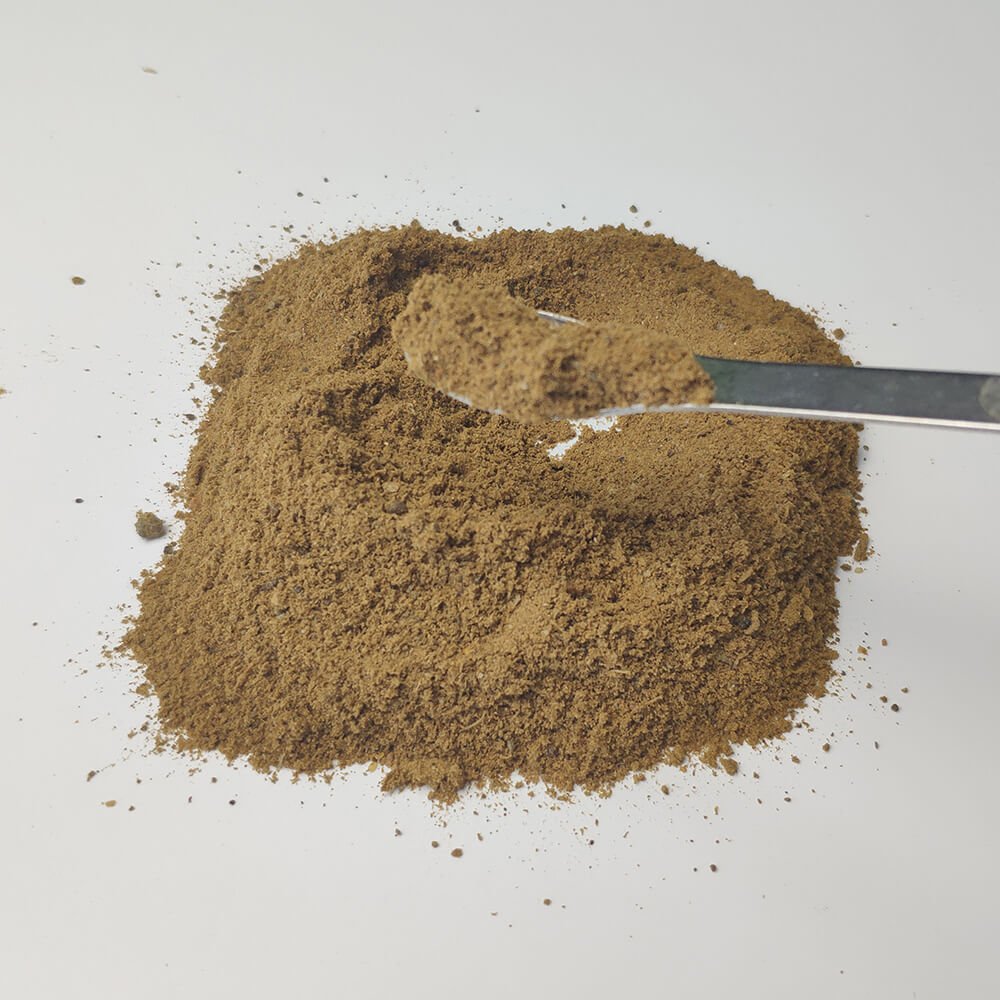
Fishmeal is a high-protein feed made from one or more fish species that have undergone oil extraction, dehydration, and pulverization. The world's major fishmeal-producing countries include Peru, Chile, Japan, Denmark, the United States, the former Soviet Union, and Norway, with Peru and Chile's exports accounting for about 70% of the total trade volume.
China's fishmeal production is relatively low, with the main producing areas in Shandong Province and Zhejiang Province, followed by Hebei, Tianjin, Fujian, Guangxi, and other provinces and cities. In the late 20th century, China imported approximately 700,000 tons of fishmeal annually, with about 80% coming from Peru and less than 10% from Chile. Small amounts were also imported from the United States, Japan, and Southeast Asian countries. Although Chinese feed industry professionals have been exploring low-fishmeal and fishmeal-free diets, fishmeal remains an important animal protein feed additive that cannot be replaced by other feed ingredients.
Key features of fishmeal include:
In summary, fishmeal is an excellent animal protein feed for balancing protein and amino acids and a good feed for balancing minerals, especially trace minerals.
Soybean expansion primarily involves two methods: dry expansion and wet expansion. Here, we refer to wet expansion, which involves grinding soybeans, injecting steam into the conditioning machine to increase moisture and temperature, then passing the material through the screw shaft of the extruder, where rotation and friction generate high temperature and pressure. The soybeans are then ejected through small holes at the tip outlet. The soybeans are subjected to high heat of 140-170°C for a short time inside the rotary extruder, then dried and cooled after extrusion to obtain full-fat expanded soybeans. Wet expansion, due to the use of steam, facilitates conditioning and can increase unit-time output. It also has a stronger destructive effect on some antinutritional factors, further improving the nutritional value of soybean meal.
Full-fat expanded soybeans undergo heat treatment, which relatively improves animal utilization. The general composition is as follows:
| Component | Content |
|---|---|
| Moisture | ≤12% |
| Crude fat | 17-19% |
| Crude protein | 36-39% |
| Crude fiber | 5.0-6.0% |
| Crude ash | 5.0-6.0% |
| Calcium | 0.24% |
| Phosphorus | 0.58% |
The quality of soybean processing directly affects the use effect. The qualified index requirements for full-fat expanded soybean processing are as follows:
| Index | Requirement |
|---|---|
| Urease activity | 0.02-0.3 |
| Protein dispersion index | 12-25 |
| Color absorption | 3.8-4.3 |
| Protein dispersibility index | >60 |
After expansion, the soybeans should have a fresh and consistent color, their inherent aroma, and no peculiar smell, sour smell, lumps, mold, or spoilage.
Full-fat soybeans have a high fat content, mostly unsaturated fatty acids, so attention should be paid to fat deterioration. Fat degradation reduces palatability and causes diarrhea. The purpose of soybean cooking is to effectively destroy certain antinutritional factors, improve utilization, and enable poultry and livestock to obtain better production performance after feeding. However, overcooking can lead to the destruction of some amino acids. For example, excessive heating can significantly destroy lysine, arginine, and cysteine, and reduce the digestibility of methionine, isoleucine, and lysine, resulting in decreased feed intake. If the degree of cooking is insufficient, some antinutritional factors in soybeans, such as trypsin inhibitors, lipase, and urease, cannot be effectively destroyed, seriously affecting their utilization. Therefore, it is necessary to test the degree of soybean cooking. The urease activity in soybean meal is generally measured to determine the degree of cooking. Currently, there are many testing methods, with the pH rise method and phenol red method being more commonly used. China's feed standards stipulate that the pH value method for measuring urease activity should not exceed 0.3. In production sites, it is best to use the urea-phenol red qualitative method to test urease activity, as this method is simple, fast, and easy to learn, making it suitable for on-site use.
Cottonseed meal, a byproduct of cottonseed oil extraction, is a protein source with varying quality. The nutritional value of cottonseed meal differs significantly depending on the degree of cottonseed dehulling and the oil extraction method.
Cottonseed meal made from completely dehulled cottonseeds can have a crude protein content as high as 40% or even 44%, comparable to that of soybean meal. In contrast, cottonseed meal produced by directly pressing undehulled cottonseeds has a crude fiber content of only 16-20% and a crude protein content of just 20-30%. Different oil extraction methods result in varying fat content in the meal, which inevitably leads to differences in crude protein content. Generally, meals with higher fat content have higher effective energy values and lower crude protein content, while meals with lower fat content have lower effective energy values and higher crude protein content. Cottonseed meal produced by small-scale rural oil presses or hydraulic presses often contains a large amount of hulls and may not be sufficiently cooked or not cooked at all, resulting in very low oil extraction rates, high fat content, high crude fiber content, and very low crude protein content.
Explore Pangoo's range of plant-based protein feed ingredients for more options to optimize your animal nutrition programs.
Citric acid residue protein is a nutritious, high-protein product obtained from corn raw materials at low temperatures. It has the following characteristics:
| Component | Content |
|---|---|
| Crude protein | ≥24% |
| Crude fiber | ≤15% |
| Crude fat | ≥10% |
| Crude ash | ≤5% |
| Moisture | ≤14% |
Citric acid residue protein is a light yellow to brown powdery substance with a pleasant aroma. It contains rich amino acids, vitamins, and various trace elements that promote animal growth and metabolism. When used as a raw
material for compound feed or directly fed to animals, citric acid residue protein has strong palatability and can increase the intake of protein, amino acids, vitamins, trace elements, and other nutrients by animals.
Fermented soybean meal, also known as biopeptide, bio-soybean meal, or bioactive small peptide, is a product that utilizes modern Japanese biotechnology and fermentation techniques. Using high-quality soybean meal from Northeast China as the main raw material, the product is created by maximally eliminating antinutritional factors such as urease, trypsin inhibitors, hemagglutinin, soybean globulin, β-conglycinin, and phytic acid in soybean protein. This process effectively reduces the molecular weight of the protein to small-molecule proteins and peptides, creating a high-quality, small-peptide protein source without antigens. The fermentation process also produces a large number of beneficial bacteria, oligopeptides, glutamic acid, lactic acid, vitamins, and UGF (unknown growth factors). Fermented soybean meal has the effects of improving palatability and absorption rate, promoting growth, and reducing diarrhea.
Benefits and effects of fermented soybean meal include:
Rice protein is composed of four main proteins: albumin, globulin, prolamin, and glutelin. The protein in rice bran is mainly endosperm protein, consisting of albumin (4-9%), salt-soluble globulin (10-11%), alcohol-soluble prolamin (3%), and alkali-soluble glutelin (66-78%). Among cereal proteins, rice protein has higher biological value (B.V.) and protein value (P.V.) compared to other proteins. Rice protein has a balanced amino acid composition and high amino acid content, which is unmatched by other plant proteins. Rice protein has a very high biological value and nutritional value, comparable to eggs, milk, and beef. Moreover, rice protein is a hypoallergenic protein that does not cause allergic reactions, making it very beneficial for the production of infant foods. In addition to its unique nutritional functions, rice protein also has other health benefits. Recent studies have shown that rice protein can reduce serum cholesterol levels.
Rice, rice bran, rice husks, and other raw materials can be used to prepare rice protein. Researchers have proposed various preparation methods for the development and utilization of rice protein, including solvent extraction, enzymatic extraction, alkaline extraction, acid extraction, physical extraction, and combined extraction methods.
The main components of milk replacer powder include:
| Component | Content |
|---|---|
| Crude protein | ≥42.00% |
| Crude fat | 2.50% |
| Crude fiber | 1.00% |
| Minerals | 7.00% |
| Moisture | 8.00% |
| Lactose | 22.00% |
| Calcium | 0.50% |
| Phosphorus | 0.70% |
| Sodium | 1.30% |
| Potassium | 1.40% |
| Lysine | 3.50% |
| Methionine | 0.60% |
| Cystine | 0.55% |
| Tryptophan | 0.50% |
| Digestible energy | 3650kcal |
| Threonine | 1.32% |
Milk replacer powder has a high digestibility (over 90%) and is completely non-antigenic. It is a high-quality protein source rich in various amino acids and trace elements. With no peculiar smell and good palatability, milk replacer powder can increase feed intake, improve piglet immunity, reduce weaning stress-induced diarrhea, and lower mortality rates. It also contains easily utilizable sugars (high content of dairy products).
Porcine intestinal membrane protein (DPS) is a novel functional nutritional animal protein material derived from enzymatically hydrolyzed porcine intestinal membrane protein. DPS powder is a peptide feed mainly composed of hydrolyzed porcine intestinal mucosal protein, obtained from porcine small intestinal mucosa or by-products of heparin extraction. It undergoes specific enzymatic treatment, concentration, and finally high-temperature sterilization and drying with soybean hulls or wheat bran as carriers.
Recent research has found that protein, when enzymatically hydrolyzed in the digestive tract, is mainly absorbed in the form of small peptides, which are more easily and quickly absorbed and utilized by the body compared to completely free amino acids. This is a major breakthrough in peptide theory and practice. New protein nutrition theories suggest that small peptides (di- and tripeptides) can be absorbed intact in the animal digestive tract. With the advancement of animal protein nutrition theory research, the theoretical research and development of peptide feed have become recent research hotspots.
Characteristics of intestinal membrane protein:
Three-insect powder, also known as insect protein powder, is a novel insect protein feed additive made from scientifically formulated and proportioned maggots, mealworms, and locusts. It is a new type of feed additive product with high protein content, rich in various trace elements, and particularly containing chitin and natural antibacterial peptides. Three-insect powder is the result of more than 10 years of research and development by Lang's Insect Industry Group.
Three-insect powder is a high-grade protein feed that reduces costs and improves immunity. It contains 17 amino acids, over 67% protein, antibacterial peptides, chitin, and other components, with 9 of the amino acids being essential for animal life activities. Three-insect powder is rich in various vitamins, phospholipids, isoflavones, and beneficial mineral elements such as calcium, zinc, iron, and magnesium. It features high protein content, balanced nutrition, and a noticeable attractant effect.
Plasma is the liquid separated from anticoagulated blood, containing fibrinogen. If Ca2+ is added to plasma, it will re-clot, so plasma does not contain free Ca2+. Serum is the liquid separated from clotted blood and no longer contains fibrinogen, but it does contain free Ca2+. If Ca2+ is added to serum, it will not re-clot. Another difference between plasma and serum is that serum contains fewer clotting factors and more clotting products.
Whey is the solution left after extracting casein from defatted milk to make dry casein or casein. Its main components include lactose, whey protein, minerals, and other substances with high nutritional value.
The main functions of whey powder include:
The natural, nutritional, economical, and multifunctional characteristics of whey products have made them a new favorite in the food development and application field. Whey products are widely used in the food industry, such as infant nutritional foods, baking, beverages, dairy products, frozen foods, candies, meat products, soups, and more.
Whey powder used in piglet feed is generally high-protein whey powder containing 65-75% lactose and approximately 12% crude protein. Low-protein whey powder or medium-protein whey powder containing 75-80% lactose and about 3% crude protein is also used. For piglet starter feed (6kg body weight), a 20% whey powder inclusion results in the most ideal daily weight gain. Super early and early weaning diets (2.2-5kg body weight) usually require 20-30% whey powder, while weaning transition diets (5-7kg body weight) generally use 15-20% whey powder.
Whey powder provides a large amount of lactose, which can produce a significant amount of lactic acid when fermented in the piglet digestive tract, lowering the pH value, aiding in milk digestion, inhibiting the growth of pathogenic bacteria, and having major significance for piglet health. The high-quality whey protein in whey powder has the advantages of high digestibility, good amino acid profile, and absence of antinutritional factors in piglets, and also contains albumin and globulin (serum proteins), which have a positive impact on the intestinal tract, especially immunoglobulins, which have a protective effect on the intestinal tract and can resist Escherichia coli. Whey powder also contains lactoperoxidase and lactoferrin, which have bactericidal and bacteriostatic functions.
Understanding the nutritional value and application of various feed ingredients is essential for formulating cost-effective and performance-optimizing animal diets. From energy-rich grains like corn and wheat to protein-packed supplements such as soybean meal and fishmeal, each ingredient plays a unique role in meeting the nutritional requirements of different animal species and production stages.
By leveraging the expertise of reliable feed additive suppliers like Pangoo, animal feed manufacturers and livestock producers can access a wide range of high-quality ingredients and tailor their feed formulations to maximize animal health, productivity, and profitability.
For more information on Pangoo's comprehensive portfolio of feed additives and ingredients, explore our product categories:
Don't forget to check out our blog for more in-depth articles and insights on animal nutrition and feed additives.
To request a quote or learn more about our products and services, please visit our contact page or reach out to our team of animal nutrition experts.
Together, let's create a more sustainable, efficient, and profitable future for the animal feed industry.